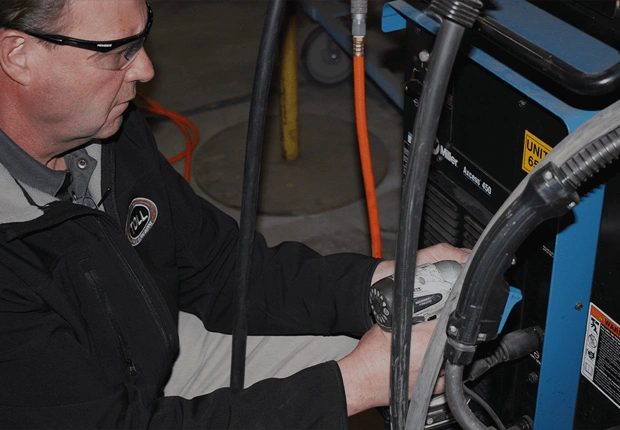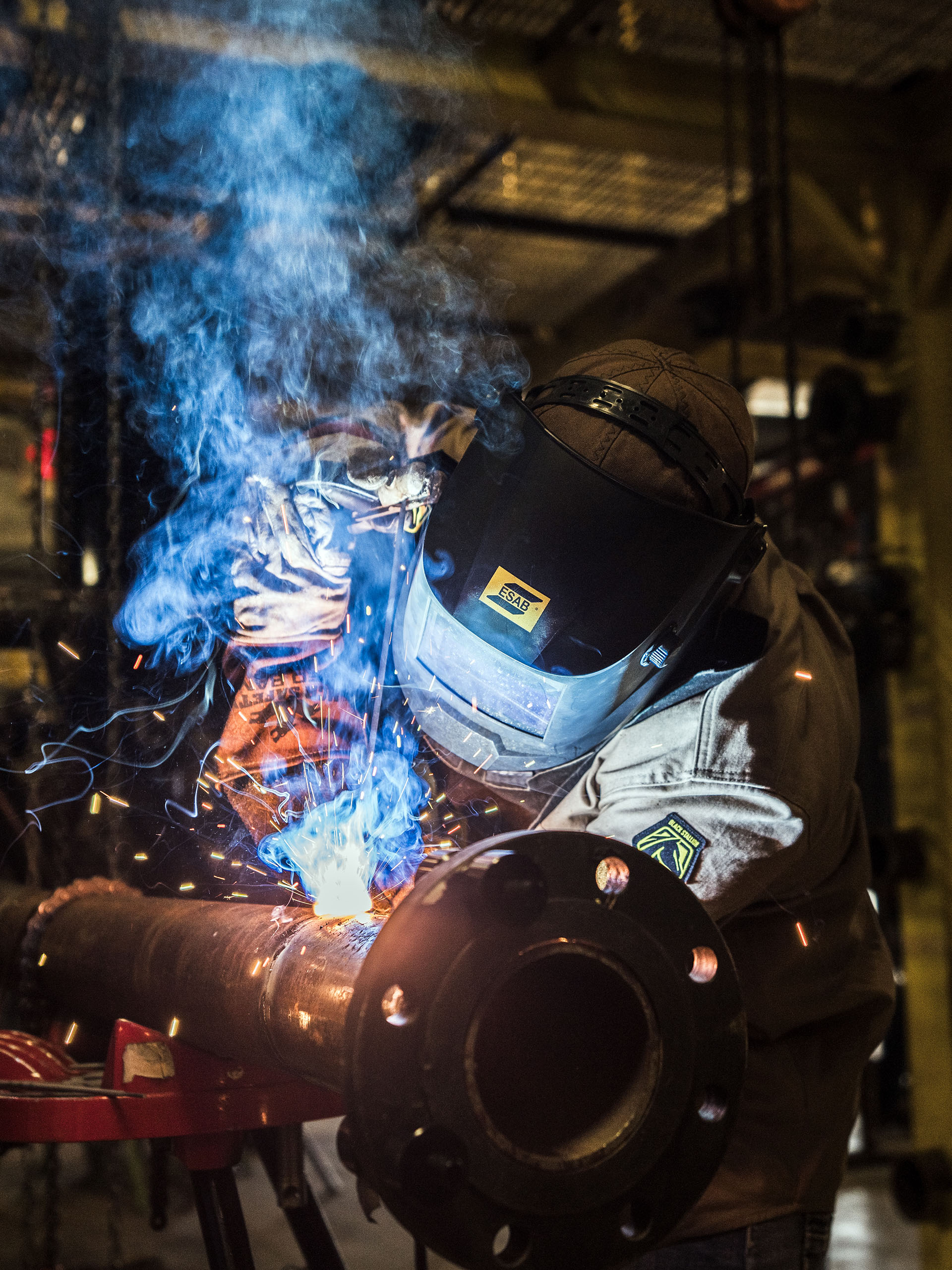Everything about Welding: Key Insights Into Techniques and Finest Practices for Success
Welding encompasses a selection of strategies, each suited for certain materials and applications. Understanding these methods, such as GMAW, SMAW, and TIG, is crucial for accomplishing excellent results. The right devices and safety and security methods can not be neglected. As preparation and fixing play critical duties in the welding process, understanding these components can considerably enhance the quality of the end product. What are the vital factors that guarantee a successful weld?
Comprehending Various Welding Techniques
Welding methods encompass a variety of methods, each fit to specific applications and materials. Amongst the most common methods are Gas Metal Arc Welding (GMAW), Shielded Metal Arc Welding (SMAW), and Tungsten Inert Gas Welding (TIG) GMAW, also recognized as MIG welding, is popular for its rate and flexibility, making it excellent for slim materials. SMAW, or stick welding, is favored for its simplicity and performance in exterior environments, especially with thicker steels. TIG welding supplies precision and control, making it suitable for detailed job and non-ferrous metals (Belgrade Welding). Each method has its distinct benefits and factors to consider, allowing welders to pick the finest approach based on the task's requirements, product type, and desired outcomes. Comprehending these techniques is crucial for successful welding
Vital Welding Devices and Devices
While different welding techniques need particular abilities, the ideal tools and tools are similarly necessary for achieving top quality results. Vital welding devices includes welding makers, which differ relying on the strategy-- such as MIG, TIG, or stick welding. Protective gear, consisting of helmets, aprons, and gloves, warranties safety and security and convenience during the process. Additionally, clamps and components aid protect products in position, making sure accuracy in welds. Consumables like welding poles, cable, and shielding gas are additionally crucial elements that affect the quality of the weld. Tools such as mills and cutters promote surface area prep work and post-weld finishing, contributing to a professional result. Spending in top quality equipment eventually improves the performance and effectiveness of welding tasks.
Security Practices in Welding
Correct safety and security techniques are necessary in the welding sector to shield workers from prospective dangers. Welders have to use suitable individual protective equipment (PPE), consisting of helmets with correct shading, gloves, and flame-resistant apparel. Ample ventilation is crucial to minimize direct exposure to damaging fumes and gases produced during the welding procedure. Additionally, workers should be trained in the proper handling of welding devices to stop mishaps. Fire safety procedures, such as maintaining combustible materials away from the welding area and having fire extinguishers readily offered, are necessary. Normal inspections of tools and workspaces can aid recognize potential risks before they bring about mishaps. By adhering to these safety techniques, welders can create a safer working setting and reduce threats connected with their profession.
Readying Materials for Welding
Preparing materials for welding is an important action that significantly influences the high quality and stability of the end product (Montana Mobile Welding and Repair Welding). Correct preparation entails cleansing the surface areas to eliminate impurities such as dust, oil, and corrosion, which can jeopardize the weld. Strategies such as grinding, sanding, or making use of solvents are typically used to achieve a clean surface area. In addition, making sure that the materials fit together comfortably is important; spaces can cause weak welds. It's also crucial to take right into account the alignment and positioning of the elements, as this will impact the simplicity of welding and the final end result. Ultimately, picking the ideal filler product and making certain compatibility with the base metals is vital for accomplishing strong, long lasting welds
Tips for Getting High-Quality Welds
Attaining premium welds calls for focus to detail and adherence to best practices throughout the welding procedure. Proper joint preparation is vital, guaranteeing surfaces are tidy and free from contaminants. Selecting the ideal filler product and welding method based upon the base metals is vital for ideal bonding. Preserving regular travel speed and angle while welding can advertise and prevent problems harmony. In addition, controlling heat input is crucial; too much heat can result in warping and compromised joints. If necessary, on a regular basis inspecting the welds throughout the procedure permits for immediate modifications. Ultimately, utilizing proper post-weld therapies, such as cleansing and anxiety relief, can improve the sturdiness and stability of the weld, eventually making sure an effective end result.
Fixing Usual Welding Issues
Welding usually offers challenges that can affect the top quality and integrity of the final product. Usual concerns such as porosity, inconsistent weld grains, and getting too hot can develop, each needing details troubleshooting techniques. Understanding these troubles is crucial for welders to improve their abilities and achieve perfect outcomes.
Porosity Troubles Explained
Although porosity can frequently be forgotten, it continues to be a crucial problem in welding that can endanger the integrity of a finished item. Porosity refers to the presence of little gas pockets within the weld grain, which can lead and weaken company website the joint to early failure. This issue typically arises from contaminants, dampness, or improper shielding gas protection throughout the welding procedure. To reduce porosity, welders need to verify that the base materials are completely dry and tidy, utilize proper shielding gases, and preserve consistent welding criteria. On a regular basis evaluating the equipment and setting can additionally assist determine potential issues before they materialize in the weld. Attending to porosity properly is essential for achieving strong, resilient welds that satisfy high quality standards.

Irregular Weld Beans
Irregular weld grains can considerably affect the quality and toughness of a completed product. Numerous aspects contribute to this issue, consisting of inappropriate travel speed, inaccurate amperage setups, and irregular electrode angles. When the welder moves as well quickly, a bead might appear narrow and lack infiltration, while relocating also slowly can cause extreme accumulation. In addition, making use of the wrong amperage can cause either undercutting or too much spatter, both of which compromise weld honesty. The welder's technique, such as inconsistent torch movement, can also result in irregular grain look. To alleviate these problems, welders ought to concentrate on keeping consistent, regulated movements and making certain appropriate devices setups to accomplish uniformity in their welds. Consistency is key to achieving solid and dependable welds.
Getting Too Hot and Warping Issues
Extreme heat throughout the welding process can bring about significant overheating and warping issues, impacting the structural stability of the workpiece. These troubles typically show their website up as distortion, which can compromise alignment and fit-up, making additional assembly testing. Variables adding to overheating include the selection of welding criteria, such as voltage and take a trip rate, in addition to the sort of product being bonded. To alleviate these issues, welders need to maintain consistent travel rate and ideal warmth input while monitoring the workpiece temperature. In addition, preheating or post-weld warmth treatment can help minimize stress and anxieties triggered by rapid cooling - Montana Mobile Welding and Repair Belgrade Welding. Normal evaluation and adherence to finest methods are vital in avoiding getting too hot and making certain the long life and reliability of welded frameworks
Often Asked Questions
What Are the Job Opportunities in the Welding Sector?
The welding industry provides varied job opportunities, consisting of placements as welders, teachers, designers, and assessors. Specialists can work in manufacturing, building and construction, aerospace, and auto markets, profiting from strong demand and competitive incomes in numerous roles.
Exactly How Can I Improve My Welding Rate Without Compromising High Quality?
To boost welding rate without giving up top quality, one must practice efficient techniques, maintain equipment, optimize settings, and enhance hand-eye control. Normal training and looking for responses can also considerably add to achieving much faster, top quality welds.
What Accreditations Are Available for Welders?
Many qualifications exist for welders, consisting of those from the American Welding Society (AWS), the National Center for Construction Education And Learning and Study (NCCER), and different industry-specific companies. These qualifications improve employability and demonstrate skill effectiveness.
Just How Does Welding Impact the Properties of Metals?
Welding influences the homes of steels by altering their microstructure, which can lead to modifications in ductility, stamina, and solidity. Heat input and cooling rates during the process considerably impact these product characteristics.
Can I Weld Dissimilar Metals Together?
